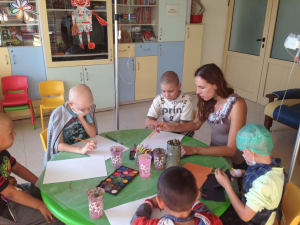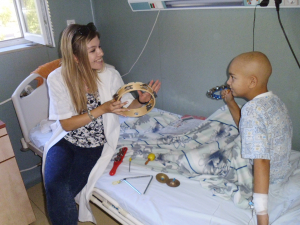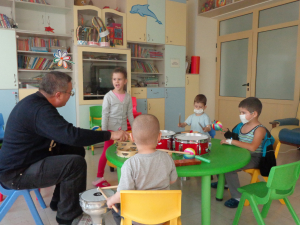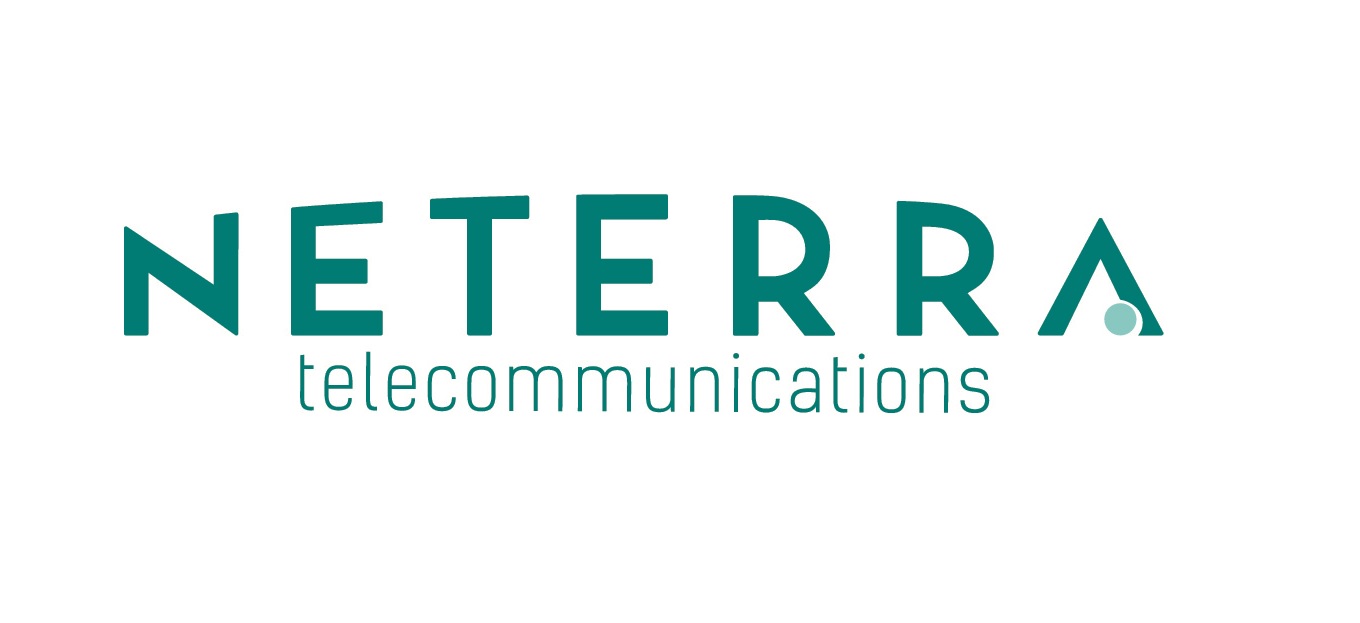
ARTON PROGRAM - The therapeutic power of the group
Creative projects involving group work - general musical performance or group painting, collage, sculpture - are useful in helping to explore and strengthen social...
Combining different arts in ARTON sessions provides children with a wealth of opportunities for creative expression. Drawing and music used together enhance sensory perceptions as well as the expression of thoughts and feelings. Painting reveals a wide range of symbols, and music expands the possibility of expression and enhances the feeling of experience. Thus, alternating music and drawing, children find different opportunities for presentation through the two creative approaches.
And here at the heart of the creative reproduction is the concept of the game. The game in the simultaneous combination of making music and expressive creation is experimental, it opens opportunities for children's engagement and conditions for their presentation to the world. We suffer when there is no space to play, when there is no space between what we are and what we can be. The game requires us to give up knowledge and control, to surrender completely to the process without knowing the result in advance. This is true for both therapy and art creation. The creative act is a response to the call of the world, it depends on the personal capacity of everyone to connect with what comes from outside to him. This ability to respond fits into our very bodily existence. Perception in itself is a creative act, not a passive acceptance of stimuli. Thus, both music and painting, which are disciplines of the senses, emerge on the basis of this inner capacity of the human being to shape the world in accordance with the possibilities available at that very moment. Only by entering into such a creative process in which to let go of control can children regain a sense of their personal capacity for action. Thus, the creation of art becomes a transition, where the play of different creative possibilities leads to surprising results.
We communicate mainly through the modalities of the imagination - including visual images, posture and movement, sound, silence, image, rhythm, words and actions - without the special intentions of creating "true art". The therapist who uses art in our therapeutic practice studies and understands these distinctions and conducts a careful conversation with the patient, including a description of movement modalities, visual images, or a metaphorical representation of the chosen topic. It thus presents a set of options, a wide palette left available to the patient's speech needs. In the therapies of therapies using art, this particular technique of intermodal transfer is often used, which is a smooth transition from one type of art to another during the same session. The intertwining of music, painting, sometimes dance and even theater provides opportunities for many therapeutic effects and a subsequent wide field of analysis. The creative child needs extreme sensitivity and strong presence when considering his movements between materials and various creative disciplines. Here, the research search for the most appropriate material is not limited to one creative discipline. Once we find the material, it is subject to assessment to what extent it corresponds to the context, so that the form can correspond to the desired expression. The crystallization of the process into creative action allows images, actions, movements, rhythms and sounds to find cognitive expression in the language of art. Interpretation takes the form of a creative dialogue, carefully accompanying the image, action, movement and sound through various creative modules until they are ready for cognitive crystallization. The training of the ability to change modalities refines the therapist's intuitive presence both in the process of crystallization and in the process of decentralization of the patient - moving his focus from the hospital environment to the realm of dreams, desires, feelings, healing and invigorating nature.

Creative projects involving group work - general musical performance or group painting, collage, sculpture - are useful in helping to explore and strengthen social...

In the ARTON Program our team of oncopsychologists, art therapists and music therapists develops the process of children's creativity as a process of...

In ARTON sessions, creating a piece of music or a song is an emotional experience of coping and satisfaction for the participating children. They make friends with...

Painting provides patients with a spontaneous, plastic method of depicting thoughts and experiences. Painting with paints is not as structured as with pencil or...










